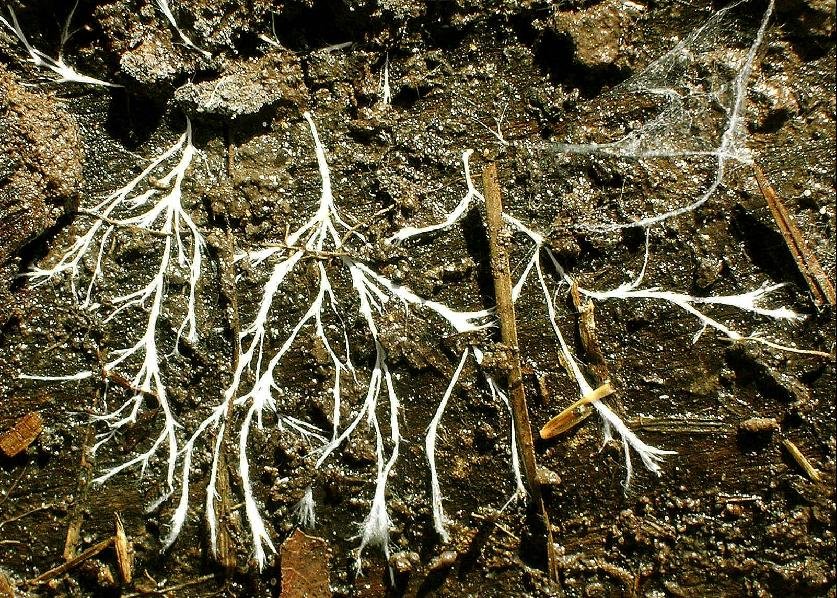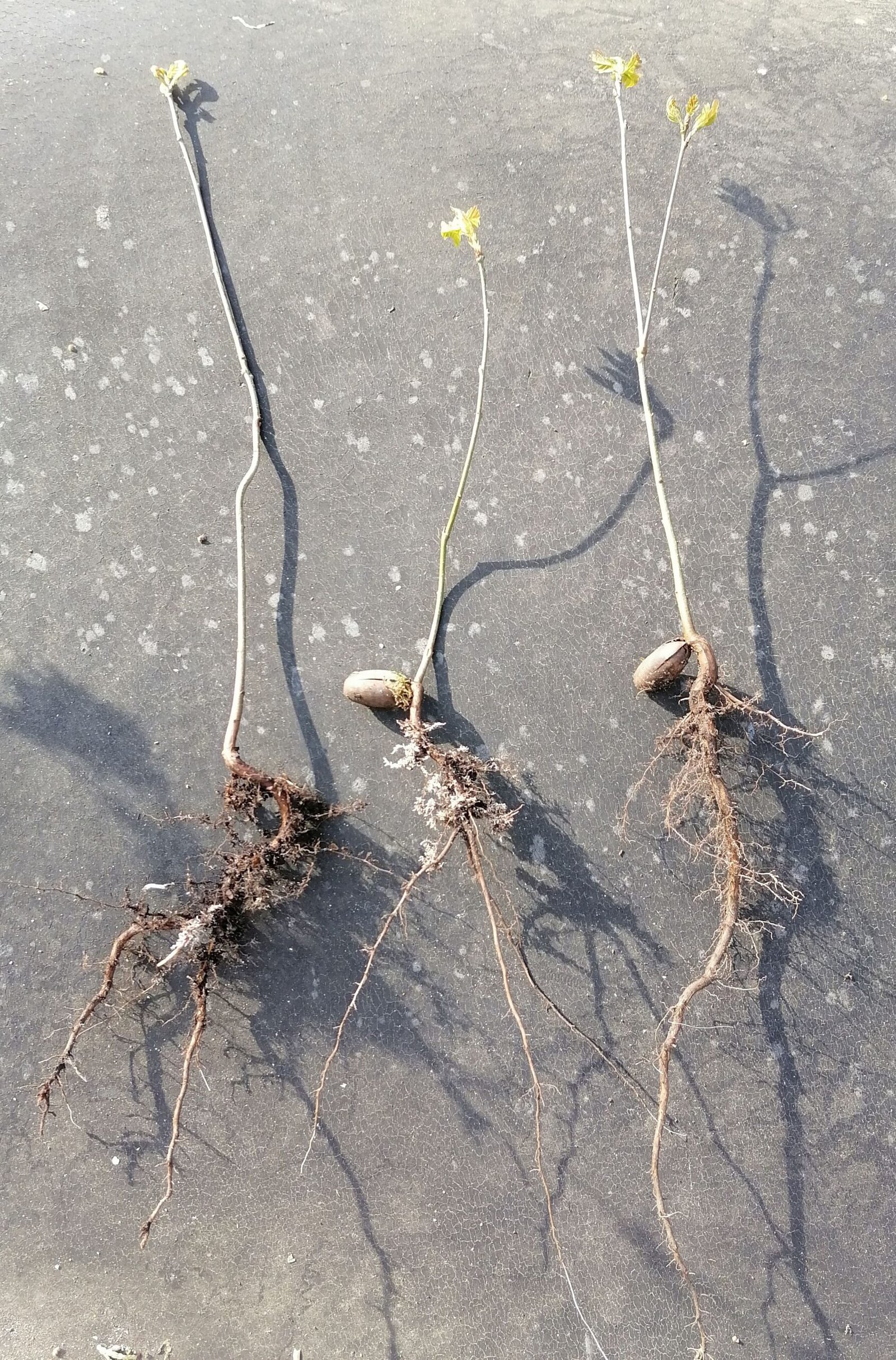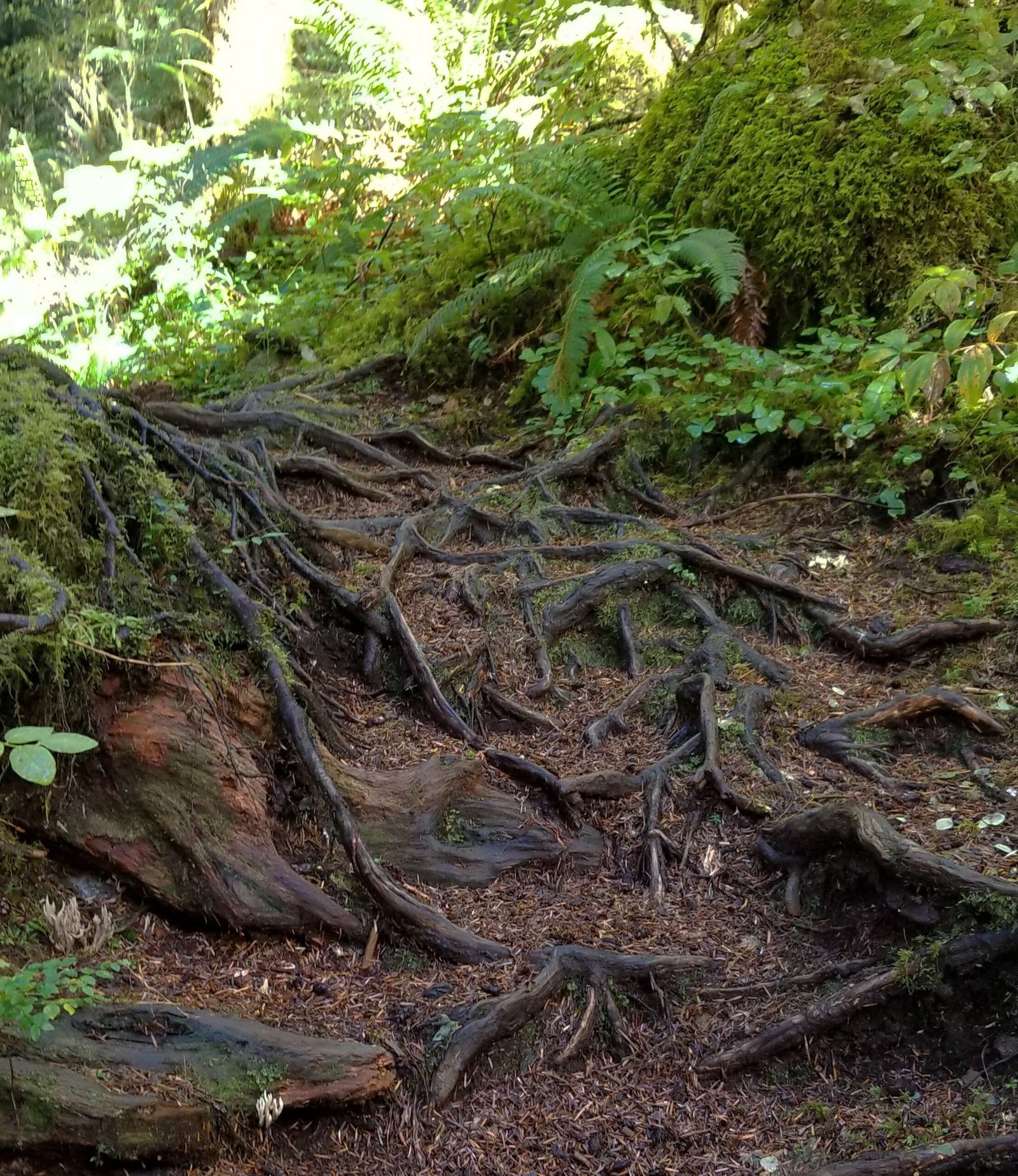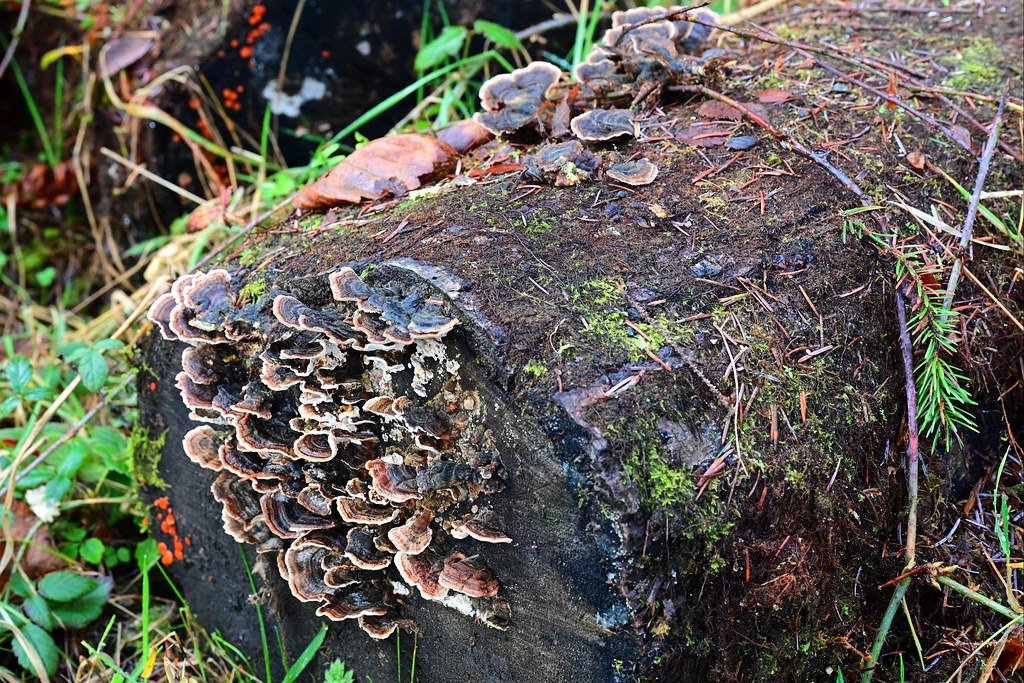Step into any forest on a quiet afternoon, and what do you hear? Maybe the rustle of leaves, the chirping of birds, or the creak of wood in the wind. But what if I told you there’s a lively conversation happening right beneath your feet — one that’s been going on for millions of years? Imagine roots whispering to each other through microscopic networks, sharing nutrients like neighbors passing sugar over a fence, and warning each other about dangers faster than you can say “timber.” This isn’t science fiction; it’s the incredible reality of how trees actually communicate through an intricate underground web that’s more sophisticated than our own internet.
The Hidden World Beneath Our Feet

Picture this: one teaspoon of forest soil contains several miles of fungal filaments. Every time you walk through a forest, you’re treading on what scientists have dubbed “the Wood Wide Web” — a name that perfectly captures the essence of this natural phenomenon. Mycelium composes what’s called a “mycorrhizal network,” which connects individual plants together to transfer water, nitrogen, carbon and other minerals. These networks aren’t just simple connections; they’re dynamic, living highways that pulse with activity. Think of them as nature’s version of fiber optic cables, except instead of data packets, they’re sending chemical messages, nutrients, and even warnings about danger. The sheer scale of this underground internet is mind-boggling — studies have shown that the hyphae of a single fungal individual can connect dozens, or even hundreds, of plants of various species, forming a continuous underground network.
What Exactly Are Mycorrhizae?

The word mycorrhiza literally means “fungus-root”, and it describes one of nature’s most successful partnerships. It is a symbiotic relationship between plant roots and soil fungi, which benefits both sides: the plant gains improved access to water and minerals, while the fungus receives sugars produced by photosynthesis. It’s basically a trade agreement that’s been refined over millions of years. The fungi act like tiny farmers’ markets for trees, extending their reach far beyond what their roots could accomplish alone. As a kind of fee for services, the fungi consume about 30 percent of the sugar that trees photosynthesize from sunlight. This might sound like a hefty commission, but consider what trees get in return: access to nutrients from areas they could never reach, protection from diseases, and a communication network that spans entire forests.
Meet the Two Main Types of Fungal Networks

Not all fungal networks are created equal. There are two major categories of mycorrhizal fungi – ectomycorrhizae (EMF) and arbuscular mycorrhizae (AMF). Think of them as different internet service providers, each with their own technology and coverage areas. The prefix “ecto” hints at the fact that these fungi form on the outside of root cells. They form a sort of sheath that encases the outside of the root as well as a “hartig net” around the outside of individual cells within the root cortex. Meanwhile, AMF, on the other hand, literally penetrate the root cells and form two different kinds of structures once inside. One of these structures looks like the crown of a tree, hence the term “arbuscular”. AMF is found in 80% of vascular plant families in existence today. Ectomycorrhizal fungi, which account for about 3 percent of mycorrhizhae, are more advanced and benefit mainly woody and tree species.
The Ancient History of This Underground Internet

It is believed that the development of the arbuscular mycorrhizal symbiosis played a crucial role in the initial colonisation of land by plants and in the evolution of the vascular plants. Imagine Earth 450 million years ago — a barren landscape with no trees, no grass, just rock and water. There is a strong consensus among paleomycologists that mycorrhizal fungi served as a primitive root system for early terrestrial plants. This is because, prior to plant colonization of land, soils were nutrient sparse and plants had yet to develop root systems. Without complex root systems, early terrestrial plants would have been incapable of absorbing recalcitrant ions from mineral substrates, such as phosphate, a key nutrient for plant growth. The 400 million year old Rhynie chert contains an assemblage of fossil plants preserved in sufficient detail that arbuscular mycorrhizae have been observed in the stems of Aglaophyton major. This partnership wasn’t just helpful — it was revolutionary, enabling the green transformation of our planet.
The Wood Wide Web’s Communication System

Much like social networks or neural networks, the fungal mycelia of mycorrhizas allow signals to be sent between trees in a forest. But how does this communication actually work? Trees use the mycorrhizal network that connects them together to send and receive chemical messages to one another. This fungal highway is a direct way to communicate, like the internet or telephone lines. This fungal communication is slow, more dial-up than broadband, but nevertheless it seems to be playing a role in relaying messages between plants about everything from hungry caterpillars to harmful pathogens. The messages aren’t just simple warnings either — trees can share complex information about their health, their needs, and even their genetic relationships with their neighbors.
Resource Sharing: Nature’s Socialist Economy

Suzanne Simard’s field work challenged that perception, and we now realize that the forest is a socialist community. In this underground economy, trees don’t compete as fiercely as we once thought; instead, they share resources in surprisingly generous ways. For saplings growing in particularly shady areas, there is not enough sunlight reaching their leaves to perform adequate photosynthesis. For survival, the sapling relies on nutrients and sugar from older, taller trees sent through the mycorrhizal network. From this research, a picture emerges of individuals sharing with those in need, of ‘mother’ trees sending carbon to seedlings, and of dying trees donating nutrients to their neighbours. It’s like having the most caring, sharing neighborhood you could imagine — except the neighbors are trees, and the sharing happens through fungal threads thinner than human hair.
Warning Systems: Forest Fire Alarms

One of the best-documented forms of plant communication is the warning system. How does it work? When trees detect trouble, they don’t just suffer in silence. In one study, Simard watched as a Douglas fir that had been injured by insects appeared to send chemical warning signals to a ponderosa pine growing nearby. The pine tree then produced defense enzymes to protect against the insect. In another study, introduction of budworm to Douglas fir trees led to increased production of defensive enzymes in uninfested ponderosa pines connected to the damaged tree by an ECM network. This effect demonstrates that defensive infochemicals transferred through such a network can cause rapid increases in resistance and defense in uninfested plants of a different species. It’s like having a neighborhood watch program where everyone looks out for each other — except the “neighbors” are different tree species helping each other survive pest attacks.
The Discovery That Changed Everything

Mycorrhizal networks were discovered in 1997 by Suzanne Simard, professor of forest ecology at the University of British Columbia in Canada. Simard grew up in Canadian forests where her family had made a living as foresters for generations. Her field studies revealed that trees are linked to neighboring trees by an underground network of fungi that resembles the neural networks in the brain. So when you first came out with this study, based on your doctoral work, and it was actually published in Nature, one of the premier science journals, and it was given this great title, the Wood Wide Web, which has sort of stuck ever since, you got a huge amount of pushback. Well, when I published the paper, I had a young family then. And yeah there were a lot of criticisms coming out in the literature. Even at conferences, my work was getting criticized. Her groundbreaking work challenged decades of scientific thinking about how forests function.
Mother Trees: The Forest Matriarchs

Mother trees are the biggest, oldest trees in the forest with the most fungal connections. They’re not necessarily female, but Simard sees them in a nurturing, supportive, maternal role. The Mother Tree is just the biggest, oldest tree in the forest. These ancient giants aren’t just standing there looking impressive — they’re the central hubs of forest communities. With their deep roots, they draw up water and make it available to shallow-rooted seedlings. They help neighboring trees by sending them nutrients, and when the neighbors are struggling, mother trees detect their distress signals and increase the flow of nutrients. Through the mycorrhizal network, these hub trees detect the ill health of their neighbors from distress signals, and send them needed nutrients. Think of them as the wise grandparents of the forest, using their vast experience and deep connections to nurture the next generation.
Family Recognition in the Forest

Trees can actually recognize their relatives — and they play favorites. A study on Douglas-fir trees at England’s University of Reading, indicates that trees recognize the root tips of their relatives and favor them when sending carbon and nutrients through the fungal network. In a recent study using stable-isotope probing, we found that MNs transmitted more carbon from older ‘donor’ Douglas-fir seedlings to the roots of younger kin ‘receiver’ seedlings than to stranger ‘receiver’ seedlings, suggesting a fitness advantage to genetically related neighbours. Some trees even show favouritism, doling out more resources to closely related plants. It’s like a family dinner where grandma always gives the biggest slice of pie to her grandkids — except in this case, grandma is a 200-year-old Douglas fir, and the pie is carbon and nutrients flowing through fungal networks.
The Science Behind Fungal Communication

Mycelium are incredibly tiny “threads” of the greater fungal organism that wrap around or bore into tree roots. Taken together, myecelium composes what’s called a “mycorrhizal network,” which connects individual plants together to transfer water, nitrogen, carbon and other minerals. But how do scientists actually study these invisible networks? To begin to figure out if a particular fungus really connects any two forest trees, scientists can sequence the fungus’s genes and construct a map of where genetically identical fungi are growing. In a 2016 study in a Swiss forest, researchers sprayed some trees’ leaves with a particular isotope of carbon and found that isotope showed up in unsprayed neighbors. But it’s not clear that fungi are necessarily responsible for this transfer. The challenge is that mycorrhizal networks are delicate: dig up a root, and you’ve destroyed the very web of fungi and wood you wanted to study.
Benefits for Seedlings: The Forest Daycare System

Association with hyphae from the CMN can be much faster in comparison to soil spore bank, by the provision of an already established fungal inoculum source by the mature tree, permitting seedlings to quickly tap into a large soil resource pool that they could not access by their own. Thus, this faster access to mycorrhizal services in the early plant stage, where mortality is high due to drought and biotic interactions, may be of critical importance, especially under harsh environmental conditions. Secondly, seedling may benefit from sharing a CMN with adult established tree since adult trees might provide much more C to sustain the network while seedling invest very little C and still obtain nutrients provided by the fungi. It’s like having a trust fund set up by wealthy parents — young trees get access to resources they could never afford on their own, while the mature trees cover most of the costs. Seedlings inoculate much faster from nearby mycorrhized plants than from spores, despite a high spore density.
Defense Chemicals: Nature’s Medicine Cabinet

Paclitaxel is a defense agent — actually a defense chemical — that is produced by the Pacific yew tree, or all yews around the world, actually. It was essential to my recovery — this compound that trees produce to defend themselves against diseases. Trees don’t just make these compounds for themselves; they share their chemical knowledge through the network. I started a study with a new graduate student, Eva, and she is looking at the neighborhood of yews — whether they’re associated with old cedars and maples, and how their neighbors might influence their ability to produce high-quality Taxol to increase their defense. We just found out that these trees are all connected together by this muscular mycorrhizal network, which provides the avenues for them to communicate this information. It’s fascinating to think that the cancer-fighting drug Taxol, which has saved countless human lives, comes from this ancient tree communication system.
The Dark Side: Competition and Conflict

But not everything in the Wood Wide Web is sunshine and cooperation. “The idea of plants giving a helping hand, or branch, to their neighbour is nice, but evolutionary biologist Prof Toby Kiers of Vrije Universiteit Amsterdam thinks it’s unrealistic. ‘We see harmony because we want to see harmony,’ she explains. ‘It fits with our world view of nature as the ultimate nurturer. But look under the surface, and it is anything but harmonious.’ After all, in any environment with limited resources, a neighbour is really just another name for a rival”. Commensal and parasitic relationships are also found in mycorrhizal networks. The fungal networks can be hijacked by parasitic plants, and some fungi may take more than they give. Ecologist Suzanne Simard hypothesizes that the fungus linking the trees is motivated by the need to secure its own source of carbon. The mycorrhizal network plays a distribution role to keep the mycelium-connected trees alive and healthy and the fungi’s supply of carbon consistent.
Threats to the Underground Internet

Although mycorrhizal networks are invisible and may seem resilient due to their underground nature, they are actually extremely sensitive to mechanical, chemical and ecological disruption. And their restoration — if possible at all — takes decades. Modern forestry practices pose serious threats to these ancient networks. In managed forests, the model of “cut – plant – harvest” often dominates. But in this approach, there is no time to rebuild the underground relationships. As a result, we get young, species-poor forests prone to drought, pathogens and soil degradation. The use of mineral fertilisers, pesticides and herbicides destroys mycorrhiza in several ways: acidifies or salinises soil, altering fungal habitat conditions, reduces the plant’s need for symbiosis. It’s like bulldozing an ancient city to build a parking lot — technically possible, but we lose something irreplaceable in the process.
Scientific Skepticism and Ongoing Debates

The idea that forest trees can “talk” to each other through a connective underground web of delicate fungal filaments tickles the imagination — but the science behind those ideas is unproven, cautions a U of A expert. Not all scientists are convinced that the Wood Wide Web works exactly as popularized. “In the really well-controlled experiments, less than 20 percent show that the seedlings performed better,” Jones says.



